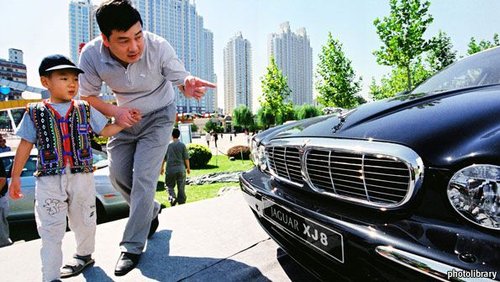The Truth Behind Big Cards
Many so-called "big names" recent quality incidents have entered the Chinese market frequently.
What are the facts behind those famous brands?
Tests show that "injuries" are not only
Not long ago, a big shopping mall appeared: "I stood there for more than two hours," she said angrily, "the Shop Director applied for the store manager, and the shop keeper said he would ask again, but it was not yet resolved." More than 2000 yuan to buy clothes to wear only once, such a large brand, there will be such a quality problem, too annoying. The same clothes on the hanger and Ms. Lee bought the "qualified products" on the tag.
Product quality is not qualified first of all raw material problems. A clothing company's design director told reporters that the general brand businesses have their own procurement department to be responsible for selecting materials. However, because the style and color of clothing are the important factors that affect consumers' purchase, some purchases only focus on the shape and color of cloth, while ignoring the quality of cloth, and there will be problems when purchasing.
There is also a situation where producers are adulterated in terms of quality and composition, such as the nominal cotton content of the garment order sheet, which is 75%, but the finished product provided by the manufacturer may be only 60% when measured, which is caused by the reduction of cotton content in the production process.
Shopping centres are not strict in quality control of brands. A clothing manufacturer told the author: "for example, before entering the shopping mall, clothing will be selected for some spot checks, but the shopping mall does not check all the products. Therefore, the inspection report shows that the qualified products, there may be only a few pieces of goods are qualified."
"A lot of clothing is decided by the city's dealers or shop chief, for example, our famous brand of women's clothing, in Zhengzhou's big shopping malls are first class, some are qualified products, but in the market in the city's shopping mall, all are qualified products. This is a code of conduct. " Xiao Yu, the shopkeeper of a shopping mall in Zhengzhou, said Xiao Yu.
A brand director said: "first class and qualified products are sold in the Chinese market, there is no regional difference in urban sales. As for the big clothes that are hard to see first class products in Zhengzhou market, it is because
China is one of the processing bases for these luxury brands. In fact, almost all developing countries in Asia are listed as luxury goods processing areas. Luxury brands are not only required to produce a ready-made garment in China. The processing of embroidery is naturally placed in China. The cotton precursor may be processed in Malaysia later. These processed clothes are then returned to Hongkong and assembled in Hongkong to be assembled into garments, then shipped to Italy, France or Spain. It is an open secret to those who are familiar with the operation of clothing.
Will the garments produced in China or other countries and regions be sent back to headquarters? Due to the high cost of transportation and customs, the products produced in the world should be sent back to headquarters for inspection, but they are not feasible in operation. Of course, there is no "quality certificate" issued by headquarters for those garments that do not return to headquarters. In fact, some luxury brands are more inclined to fashion brands, or they can be called "luxury new ones", which are second tier brands themselves.
"Some of the front-line brands are afraid to be known that they have factories in China or other developing countries in Asia, and even find some remote processing plants to do foundry. Some home workshop factories even do not know the locals." Xiao Yu said that this is already an "open secret" in the industry.
It is understood that the national clothing standards or clothing standards of the industry deviate from the standard value according to the appearance of the garments and the internal quality inspection results, and the garments are divided into three grades: the top quality, the first grade and the qualified products. Among them, the best quality is the best and the first grade is the second. Some people in the industry have analyzed that because of the stringent requirements of Beijing, Shanghai and other tier cities on the entry of large clothing into shopping malls, the requirements for the quality of clothing are also high. In some second tier cities, many brands take advantage of the sales of qualified products because of the lack of strict checks on brands.
In the process of consumption, consumers should set up the correct consumption concept, do not blindly look at the brand, but also look at the quality of the brand. Not all famous brand goods must have the quality of first-class goods. Not all garments that are marked with first-class prices are first-class goods, nor are all high priced goods necessarily worth the value.
Nowadays, this kind of "OEM + OEM" is not surprising. As early as June 2008, Zhejiang industrial and commercial law enforcement officers extracted three back bags that were being sold by LV Hangzhou store. The inspection report showed that there was no "identity" logo in the leather bags of the three checked bags, so they were unqualified products.
As early as in June 2008, the Shanghai industrial and commercial bureau in the Liu. Jo brand clothing store, inspectors found that most of the clothes were only English logo, sales staff argued that this is to highlight its international brand effect. And the logo of Armani clothing is also unclear. For example, a Armani underwear label is only vaguely marked with two words of the fiber, and consumers do not know whether the "fiber" refers to cotton, wool, silk or chemical fiber. In addition, the inconsistencies in the Chinese and English composition of clothing labels have also become an important reason for the quality of Armani's checks.
According to the insiders, frequent quality gate generation is closely related to the cost control of many enterprises. In 2008, the global financial crisis brought great pressure to the enterprises. Enterprises had to cut costs to maintain their operation. Especially in the field of products closely related to consumers, such as automobiles, household appliances, IT, clothing and so on, competition is more intense. Many international brands in these areas, in order to occupy a larger market share and maximize profits, will maximize the cost in product production, marketing and after-sale services. But how to use cost cutting strategy to help survival and development is also a very complex problem. If properly applied, it can save enterprises and will be inclined, otherwise, enterprises can be placed in a dangerous situation of survival or destruction. "Quality gate" is the best example of the latter.
The quality and service problems of the collective explosion also sounded a warning bell for the world's top brands, and it was also a reminder to Chinese clothing enterprises. If these top brands are brave enough to act in a sense of shame, act in a timely manner, maximize their losses for consumers, and investigate the root causes of problems, they can truly reflect corporate responsibility. Then it is not impossible to rebuild the quality and regain the favor of users. The key is to see whether they have such determination and integrity.
- Related reading
Frequent Price Increases Stimulate Purchases Of &Nbsp; Deconstruct Luxury Pricing Codes.
|- Popular this season | HUI S/S 2020 米蘭時裝周《中國名伶》
- I want to break the news. | Millet Has Held A "Double 11 Mobilization Meeting" Target Increased 300% Over Last Year.
- I want to break the news. | Performance Data: Fresh Southern China Area Sales Reached 250 Million, An Increase Of 5 Times Over The Same Period Last Year.
- Market quotation | China Light Textile City: Home Textile Market Turnover Slightly Increased, Curtain Cloth Turnover Daily Rise
- Market prospect | Market Analysis: China'S Fashion Buyers' Store Price Rises Again
- quotations analysis | Enterprises Prudently Open Up Scale Cotton Seed Prices Rise
- Association dynamics | Home Textile Enterprises Directly Exporting To The United States Should Actively Adjust Their Mindset To Find Gaps And Practice Internal Strength.
- Innovation and invention | 紡織品再生“富礦”得以深挖!東華教授用高科技“喚醒”2億噸廢舊紡織品,
- Fashion brand | Kakao Friends X Nike 2019 New Joint Peripheral Series On Sale
- Fashion posters | GOLF WANG X A$AP Rocky Joint Project WANG$AP Is About To Be Announced.
- The Temperature Is Soaring &Nbsp; OL Style Is Not Far Away From The Body.
- Famous Sports Shoes Asics Fashion Sales Analysis
- The Truth Behind Big Cards
- Brand Clothing Also Has An "Additive" &Nbsp; When The Clothing Quality Door Will Be Closed.
- Best Matching Skills For Summer Women'S Work Clothes
- Seven Wolves Men's Clothing Integration Resources &Nbsp; Start "Thousands Of Talents Plan"
- China Textile City Pure Cotton Yarn &Nbsp; Price Fall
- The Basic Skills Of Clothing Matching With Individuality
- Biohazard Actress Heroic Sexy Blockbuster
- Home Textile Industry &Nbsp; Huge Space For Development



